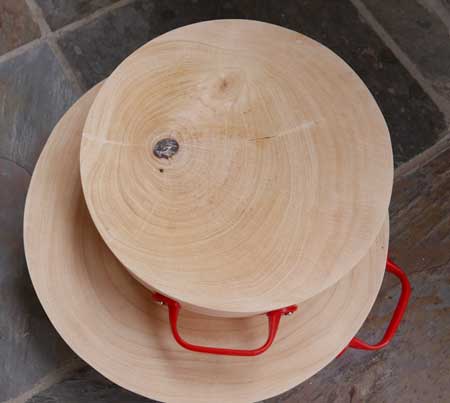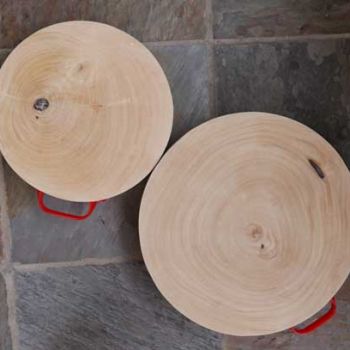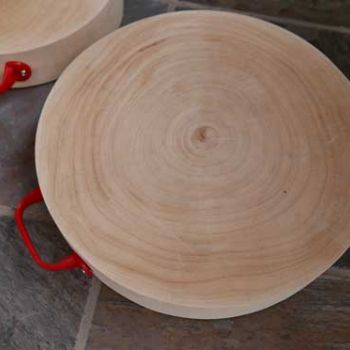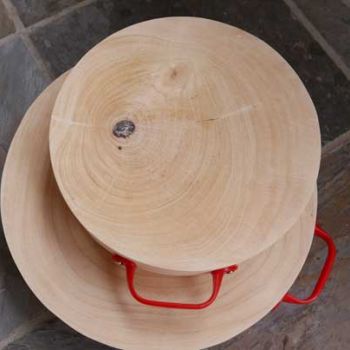Thai Tamarind Cutting Board
Add to cartTemporarily Out of Stock 9" is out of stock but we also offer:
11" Tamarind Cutting Board
12" Tamarind Cutting Board
Recently featured in our new recipe for Seafood Soup.
Here is the best cutting board you'll likely find anywhere.
Pictured here with a larger 12" size
A solid block of end-grain exotic hardwood from a tamarind tree. Tamarind wood is well-known in Thailand as the very best for cutting boards, used to make all Thai recipes. This round slice from the center of a tamarind tree is about 9" in diameter (not less than 9") and an impressive 2+" thick (mostly 2 1/8" thick).
What makes this cutting board so special? Typically, cutting boards use flat planks of cross-cut wood, which makes your knife blade go dull quickly. End-grain wood is superior, and end-grain butcher blocks sell for a high price but those are made of little blocks glued together.
For generations in Thailand, cooks have always used the wood of solid tamarind tree because it's the perfect material. Indeed, customers have noted from our street vendor photo and our street vendor video series that all chefs are using the same style of cutting board.
The board itself weighs about 8 pounds, a lot heavier than you'd think by looking at the piece of wood, but it's so dense that even 40 grit sandpaper on an industrial belt sander will hardly reduce it, yet gentle on your knife. With end grain wood, especially from the tamarind tree, your knife will stay sharp a lot longer because as it hits the board the grains are straight (like a super-tight brush) rather than sideways.
Some things about the cutting board are less than perfect.
There is a cheap red plastic handle on the side of every board, affixed with two small screws. On the smaller boards these are fine. On the 16 lb boards they are likely to break, not able to carry the weight. We recommend removing it.
You might notice that the wood might have a few small natural marks on it. The wood also might have small surface cracks. Some have very little cracking, others have it on just one side. Most show marks as seen below, branch stems in the wood. Based on our experimentation at home, the cracks respond well if you condition your cutting board immediately by rubbing it several times with mineral oil. This helps contract the wood back. The small cracks also fill in with beeswax, or parafin wax. We notice that when street vendors are using tamarind cutting boards in Thailand, the odd small crack is fairly normal. With standard cleaning and use of vinegar & bleach on a regular basis (as with any cutting board) your cutting board will last forever. We've tried to show in pictures above what you can expect.
Important: How to Care For Your Tamarind Cutting Board.
When you get this cutting board, promptly season it by applying a generous amount of bees wax to the outer 3" rim but you don't need to treat the main surface. Wipe thoroughly and let it soak in. Repeat several times over the course of the first week you own it, then apply once per month. It seals the grain from bacteria, prevents absporption, and keeps the wood moisturized to prevent splitting.
Beeswax is an all natural anti-bacteria that seals your cutting board. You can buy pure beeswax online but also in some stores. Pure beeswax is made into candles that you can use as well. At ImportFood.com we love beeswax with a passion, and raise bees as a hobby. Tamarind, cutting boards, and beeswax are a nice combination of things we love the most. Carefully warm the wax just until the wax melts. Apply to your cutting board warm.





